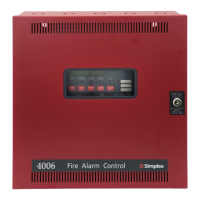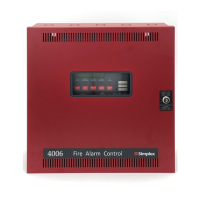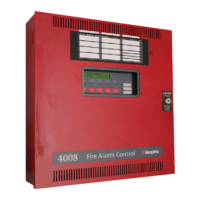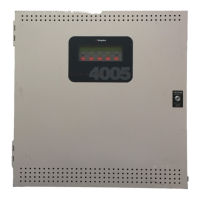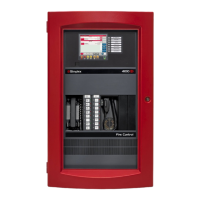4-22
Chapter 4 Networking
Network Audio Wiring
Head-End Audio
Network
Configuration
A “Head End” audio network usually contains one node with an audio controller module
(4100-1210 Analog Controller Board or 4100-1211 [or -1311] Digital Controller Board), and
may contain local analog or digital amplifiers. Some configurations may have an audio
controller module located in a non-head end node; for example, an application with backup
local audio in a non-head end node or an application with distributed microphones.
Typically, the other nodes only contain amplifiers, the audio riser interface (4100-0621 Analog
Audio Riser or 4100-0622 Digital Audio Riser), the 4100-0623 and the 4100-1341 Network
Audio Riser Controller Module.
The 4100-0623 Network Audio Riser Controller Module supports audio interconnections when
connected to 4100-0621 Analog Audio Risers or 4100-0622 Digital Audio Risers. It is a
version of the Basic TIC that doesn’t have an RUI input. It communicates via internal slave
communications and is used to control audio riser interface modules in network nodes that are
stand-alone fire alarm control panels.
Locations on the
Network Audio
Riser Controller
Module
Figure 4-18 shows the DIP switch, LED, and connector locations on the 4100-0623 Network
Audio Riser Controller Module.
Figure 4-18. Network Audio Riser Controller Module
LED4
SW1
LED1
TB2
PRI
LED2
P1
P3
LED5
TB3
SEC
RUI
TMPR SW
24C INPUT
SHLD
4100
COMM
LOSS
RUI
G.F.
SEARCH
AUDIO RISER CARD
SW1. Baud
rate/device address
DIP switch (see
Appendix A)
LED1. Illuminates
to indicate
communication loss
with the CPU
P3. Audio riser
connector

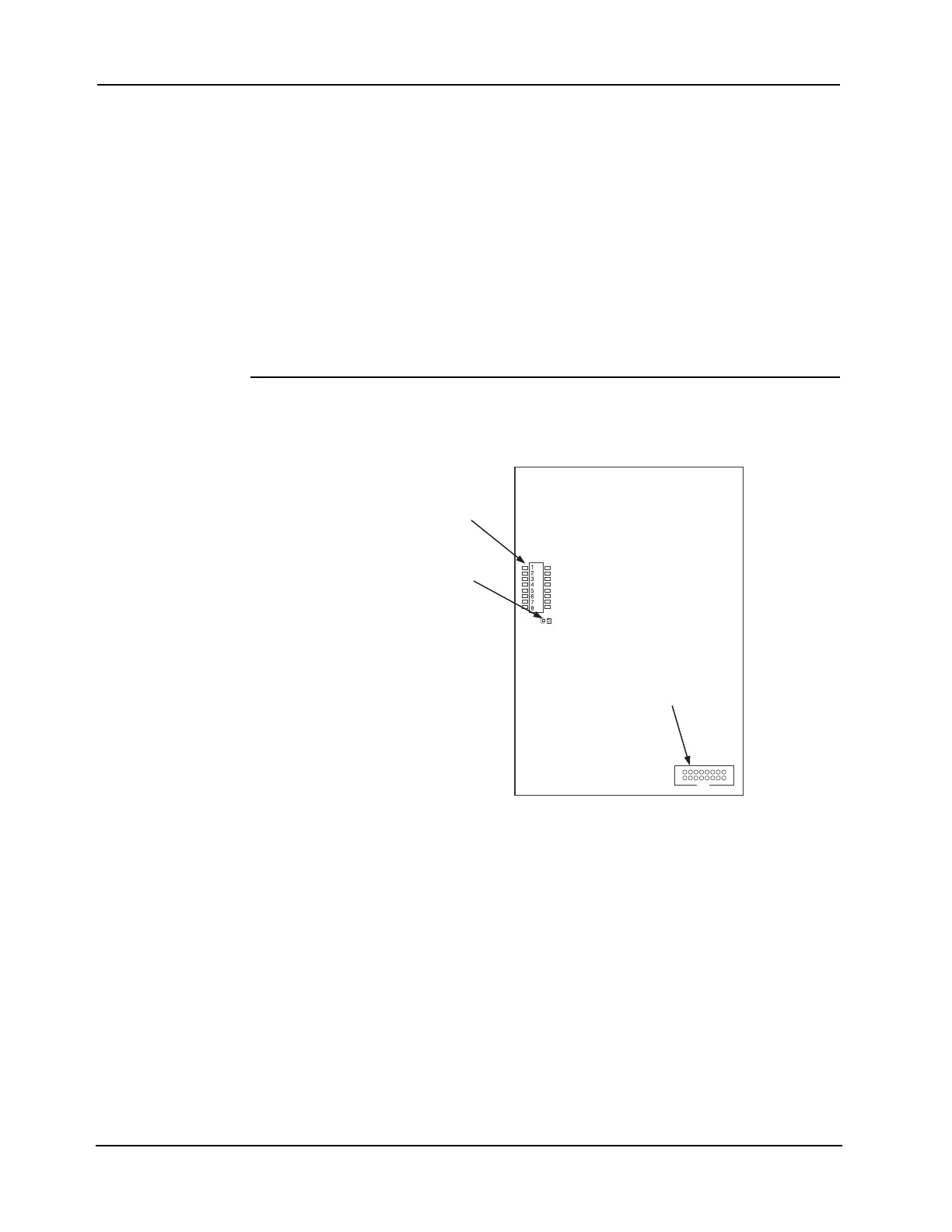